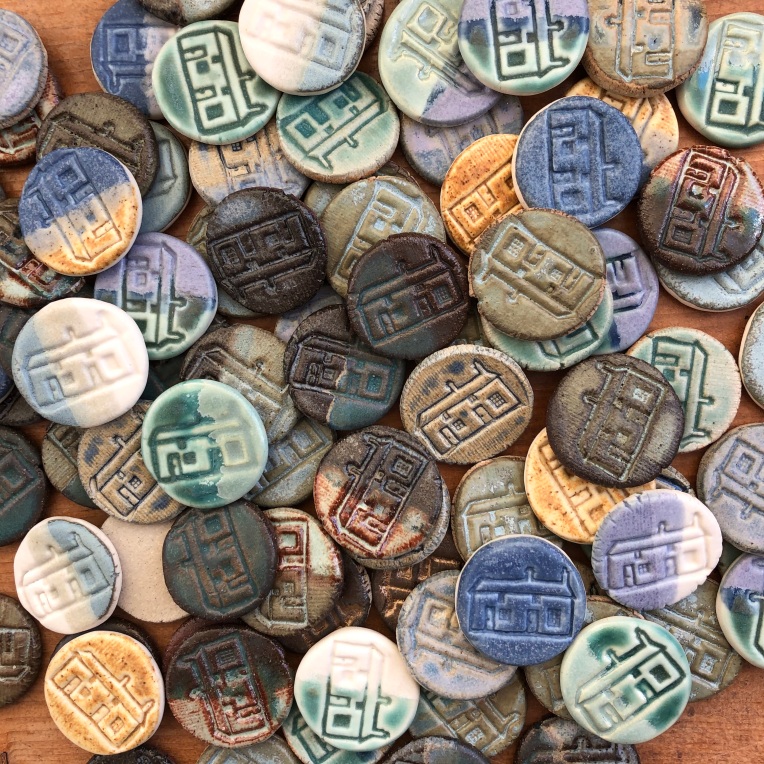
Getting on for a year ago I became the artist-in-residence at Mrs Smith’s Cottage in Navenby. This small worker’s redbrick house was home to Hilda Smith (on and off) for almost a century and although she was very much a social being and ‘of this world’ Mrs Smith determinedly kept to the old ways of household management. The Cottage doesn’t have a kitchen or a bathroom as you or I would imagine it, no fitted units for her. Instead, having finally capitulated to the requirements of the local council, Hilda admitted a cold tap into the house (in her 80s), under which she parked a plastic bowl. Mrs Smith’s bathing always took place in a tin bath in front of the range and she climbed a ladder to her bedroom, even in her 102nd year.
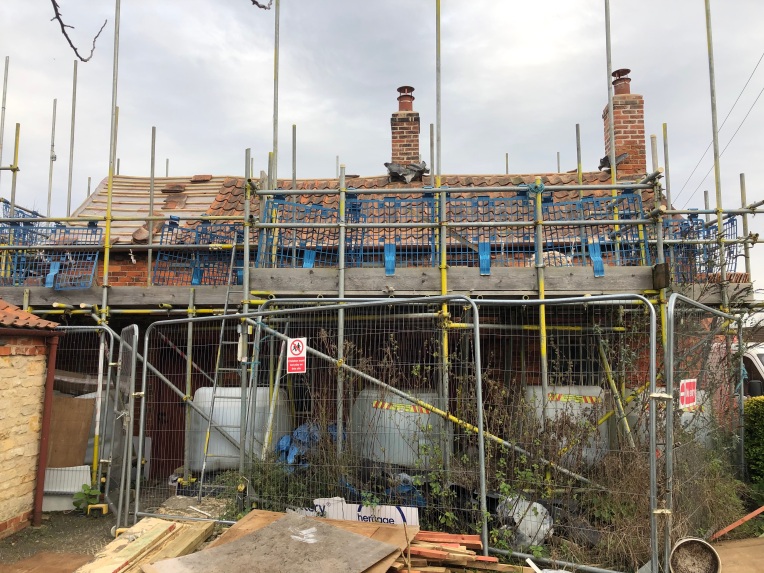
Mrs Smith kept a daily dairy, just short descriptive entries that provide a window into her world. This, and the fact that the building was an almost-untouched example of the way people lived in rural Lincolnshire, inspired North Kesteven District Council and the local community to retain this dwelling as a museum. It has recently been closed for a few years due to building safety concerns but is currently being renovated with major investment from the National Lottery Heritage Fund and due to open later this year.
Since my appointment I have been getting to know the local community, visiting art groups, coffee mornings, local historians, the primary school and a care home. I am working alongside the Interpretation Team to create site-specific artworks that will nestle into the restored domestic spaces of the Cottage. Our workshop plans have fallen over due to the need for Covid-19 social distancing, but we’re finding ways to deliver activities online. We know that members of the community are working on sections of a community hooked rug and even on paintings of the Cottage for eventual exhibition, so even this empty space is inspiring creativity.
I have only ever known the Cottage as a building site, so I’m excited to see it once the builders have left and the collections have been restored to the space. I’m already starting to work on ideas for a second series of site-specific works to develop during my second year at the Cottage but, meanwhile, I just wonder what Mrs Smith would think about all this fuss!
To keep up to speed with developments follow Mrs Smith’s Cottage on Twitter or Instagram






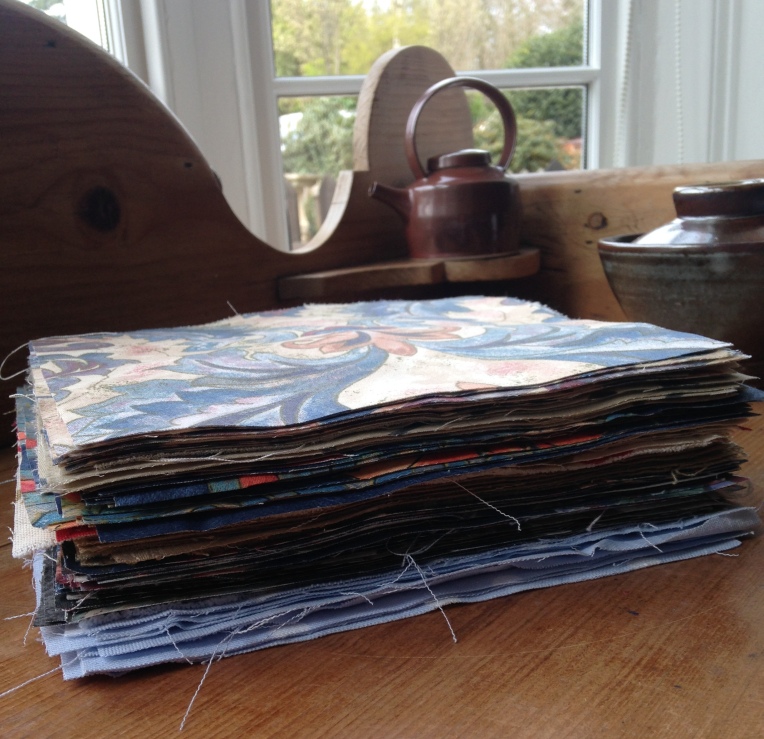
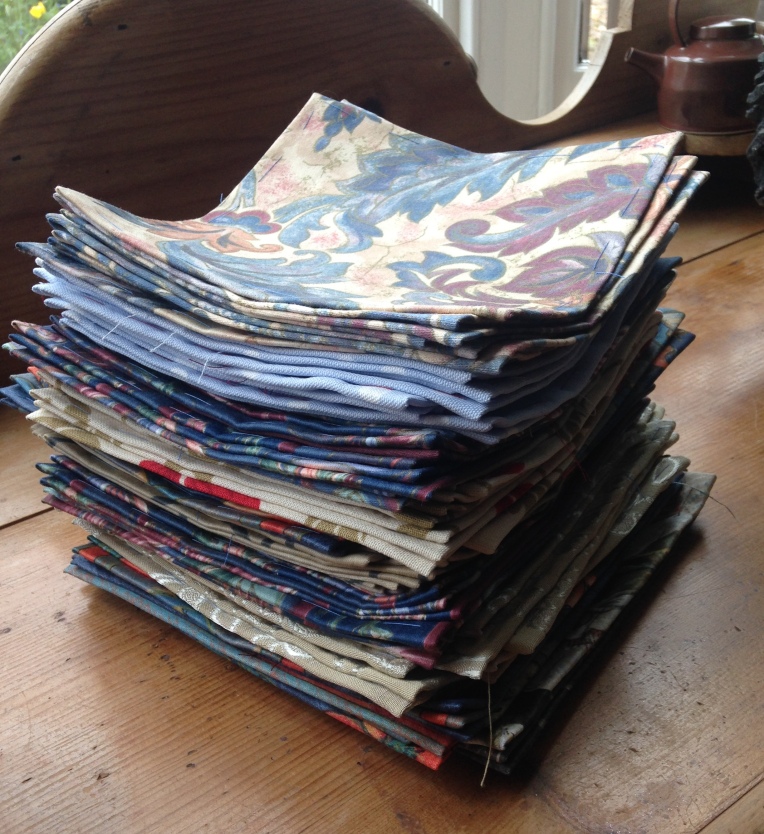
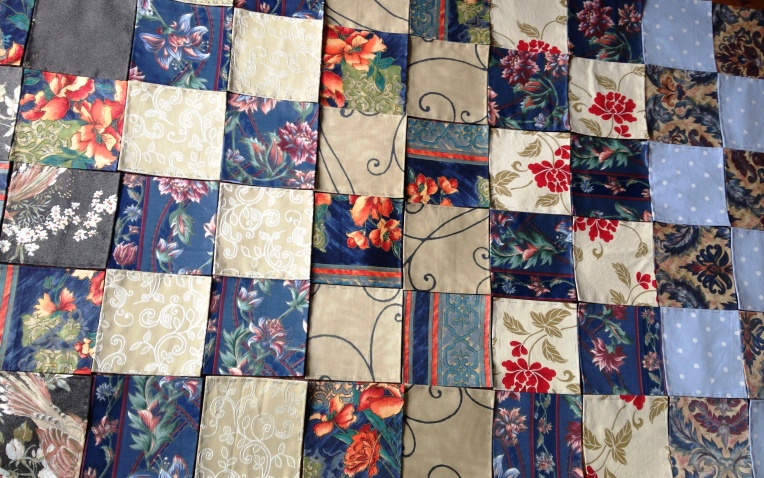
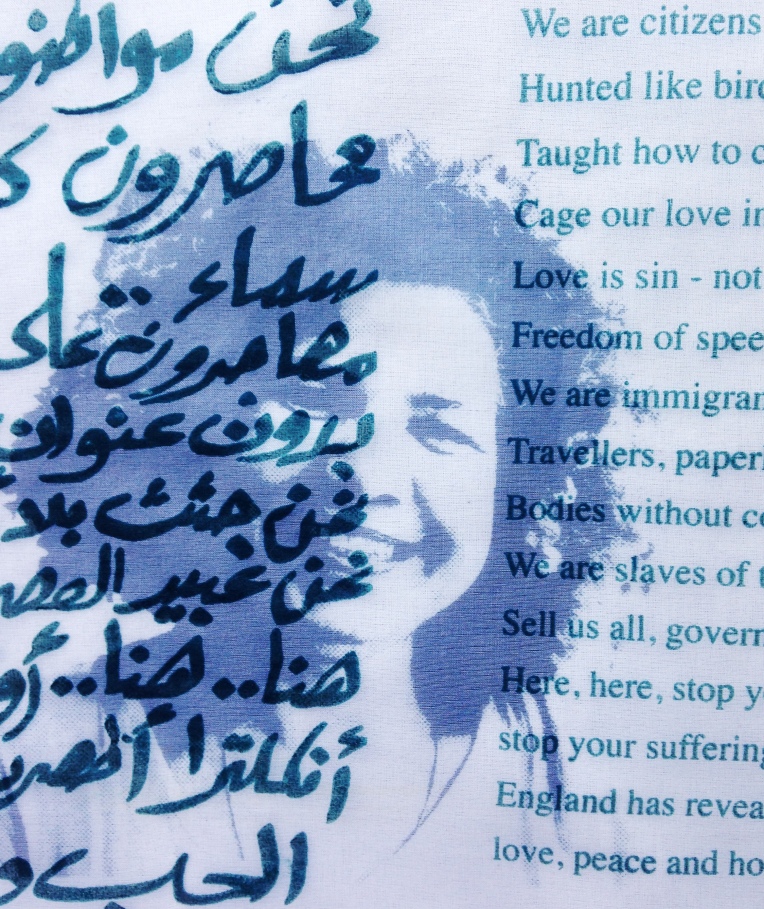 Making larger work is a long-term aim of mine. I tend to work fairly small (50cm square is ‘big’), partly because my processes are very slow-speed and partly because the practical constraints on hand-stitching and applying buttons over a larger piece make it tricky.
Making larger work is a long-term aim of mine. I tend to work fairly small (50cm square is ‘big’), partly because my processes are very slow-speed and partly because the practical constraints on hand-stitching and applying buttons over a larger piece make it tricky.





 As someone who prefers to thriftily mend things rather than buy new, I celebrate the fact that all my furniture is secondhand or gifted (although I do aspire to having my first ‘new’ sofa by the time I’m 50, 24 months and ticking…). Yet I spend my days making stuff. Buttons by the hundred, flat textiles that accumulate in layers like a hopeful trousseau.
As someone who prefers to thriftily mend things rather than buy new, I celebrate the fact that all my furniture is secondhand or gifted (although I do aspire to having my first ‘new’ sofa by the time I’m 50, 24 months and ticking…). Yet I spend my days making stuff. Buttons by the hundred, flat textiles that accumulate in layers like a hopeful trousseau. Although I want to make really large scale, impactful, textiles that line walls and transform spaces, working on a small scale for now means that I don’t overuse resources and I don’t really take up too much space. Seeking out and recycling domestic linens from my local secondhand shops means that the energy invested in making the original sheet or pillowcase is celebrated in a second life. And, although my button-factory is gaining pace (me and a piece of clay, very low tech) the fact is that my buttons are teensy, weighing less than a gram. Yes they do need to be fired twice in a kiln, but I fit them round the edges of other people’s work, in the places that otherwise would be wasted space.
Although I want to make really large scale, impactful, textiles that line walls and transform spaces, working on a small scale for now means that I don’t overuse resources and I don’t really take up too much space. Seeking out and recycling domestic linens from my local secondhand shops means that the energy invested in making the original sheet or pillowcase is celebrated in a second life. And, although my button-factory is gaining pace (me and a piece of clay, very low tech) the fact is that my buttons are teensy, weighing less than a gram. Yes they do need to be fired twice in a kiln, but I fit them round the edges of other people’s work, in the places that otherwise would be wasted space.





 These are unassuming materials. Cheap, hardwearing, ubiquitous. This seems to fit with the underpinning ethos of my work which is associated with ‘making do,’ of husbanding (wifeing?) scarce resources and keeping things together in times of poverty and crisis. That begins to sound a bit overblown for a bit of stitching, maybe, but I do believe that embracing frugality is a political act and learning to appreciate the handmade and homemade has the capacity to build resilience.
These are unassuming materials. Cheap, hardwearing, ubiquitous. This seems to fit with the underpinning ethos of my work which is associated with ‘making do,’ of husbanding (wifeing?) scarce resources and keeping things together in times of poverty and crisis. That begins to sound a bit overblown for a bit of stitching, maybe, but I do believe that embracing frugality is a political act and learning to appreciate the handmade and homemade has the capacity to build resilience.


 Some days I spend hours on end stitching repetitive marks across a piece. I’ll start at 9am and make the same small hand movements until 5pm. These are perfect days, when my mind wanders while I work and I don’t have to worry about making good decisions about what I’m doing, just ensure that my stitching follows the format I’ve set myself.
Some days I spend hours on end stitching repetitive marks across a piece. I’ll start at 9am and make the same small hand movements until 5pm. These are perfect days, when my mind wanders while I work and I don’t have to worry about making good decisions about what I’m doing, just ensure that my stitching follows the format I’ve set myself. Or it was. I have decided that I want success on my own terms. I am already a high-achiever in the kitchen-goddess stakes. My 14 year old enjoys lentils and aubergine for goodness sake! Simplicity and frugality make me happy, I am a signed up member (is there such a thing?) of the Visible Mending movement and aim to reduce my impact on the Earth’s resources, and on my own, by making do and mending what I can. This may be slowing down my productivity as an artist and maker and my ambitions to make my creative mark in the world, but it is part of my narrative and is non-negotiable. Of course there is room for improvement and I’m grateful for the impetus to do better, but I have decided that I too spend my weekdays either working or working out, it’s just a different sort of work.
Or it was. I have decided that I want success on my own terms. I am already a high-achiever in the kitchen-goddess stakes. My 14 year old enjoys lentils and aubergine for goodness sake! Simplicity and frugality make me happy, I am a signed up member (is there such a thing?) of the Visible Mending movement and aim to reduce my impact on the Earth’s resources, and on my own, by making do and mending what I can. This may be slowing down my productivity as an artist and maker and my ambitions to make my creative mark in the world, but it is part of my narrative and is non-negotiable. Of course there is room for improvement and I’m grateful for the impetus to do better, but I have decided that I too spend my weekdays either working or working out, it’s just a different sort of work.